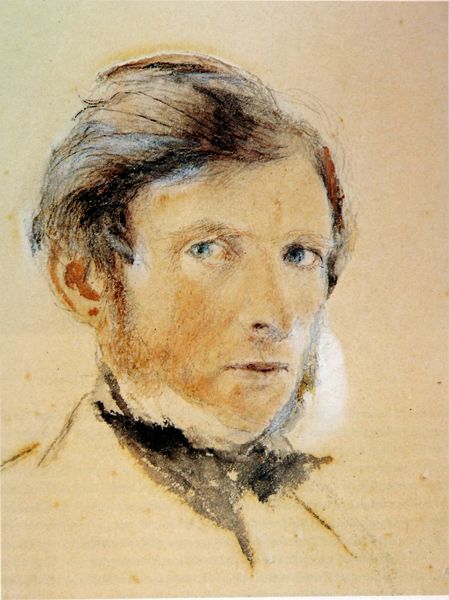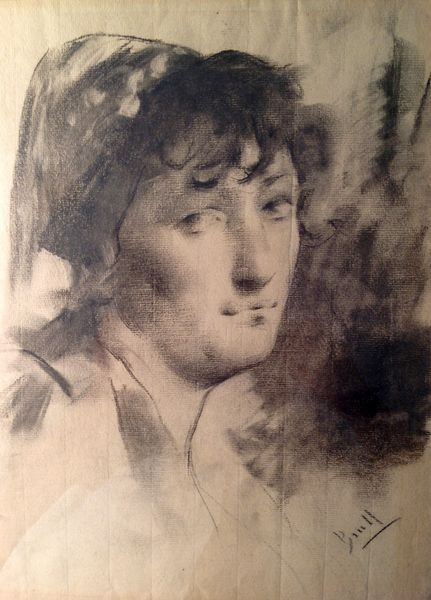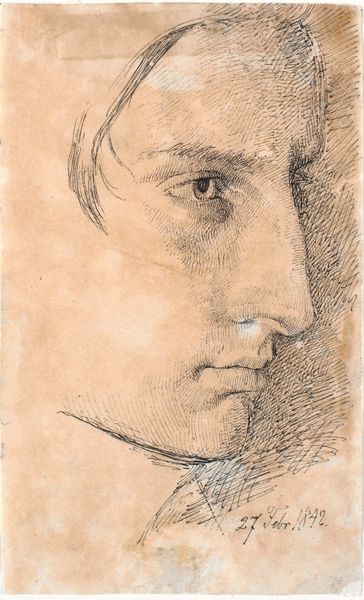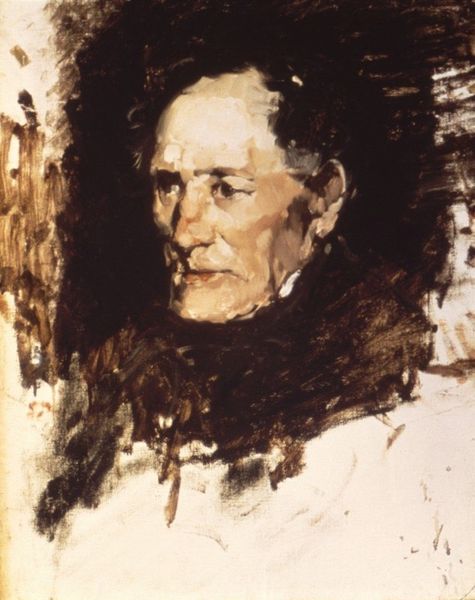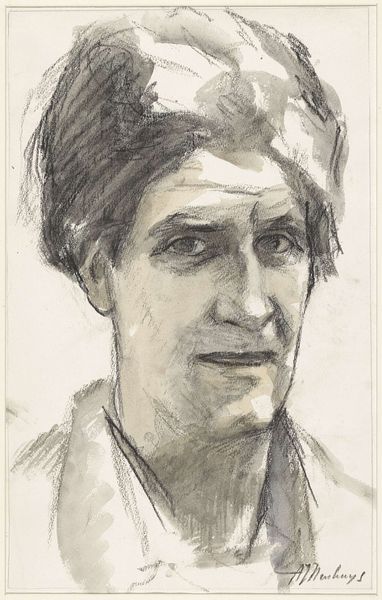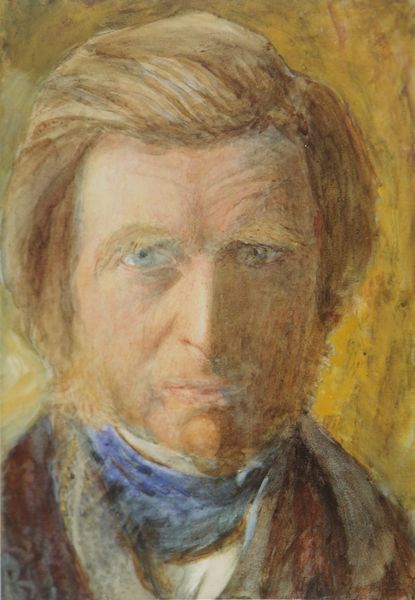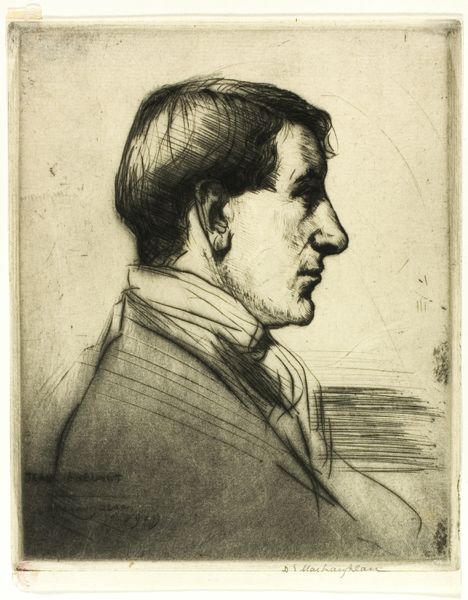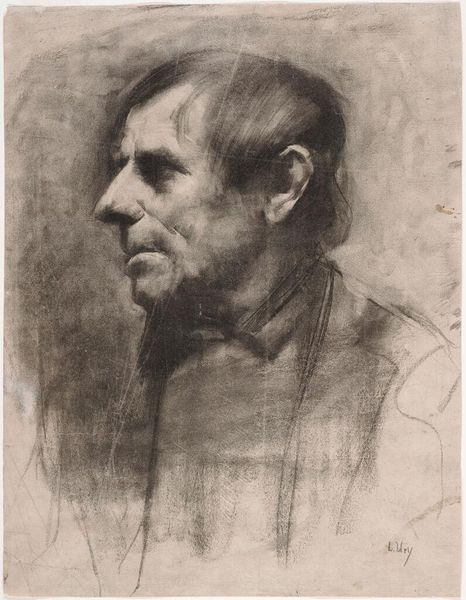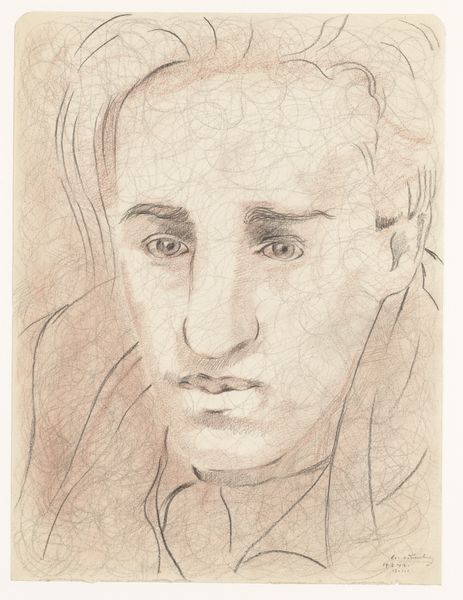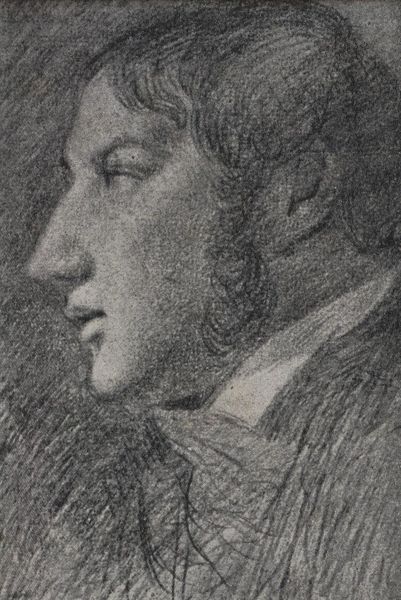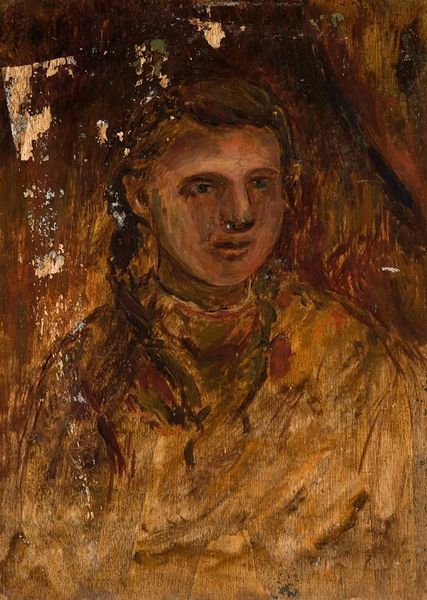
Copyright: Public domain
John Ruskin made this watercolor self-portrait sometime in the 19th century. Ruskin was more than an artist; he was a leading art critic in Victorian Britain. In this loose, informal portrait, Ruskin presents himself not as a figure of authority, but as a sensitive and intellectual individual. The work reflects the rising social status of artists and intellectuals in the 19th century. It was a period when art began to be seen as a vehicle for social and moral commentary. Ruskin himself was a proponent of the Pre-Raphaelite Brotherhood, a group of artists who challenged the academic art of the time and sought to return to the sincerity and simplicity of pre-Renaissance art. To understand Ruskin's self-portrait fully, we can consult his writings and biographies to gain insights into his artistic and social beliefs. We might consider his relationships to institutions of art, such as the Royal Academy. It is through such investigations that we can appreciate how art is contingent on its social and institutional context.
Comments
No comments
Be the first to comment and join the conversation on the ultimate creative platform.
